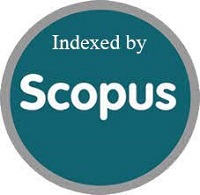Multidimensional Rasch Analysis of Gender Differences in Tes Intelegensi Kolektif Indonesia–Tinggi (TIKI-T)
DOI:
https://doi.org/10.15408/jp3i.v12i1.20417Keywords:
gender differences, intelligence, multidimensional rasch analysis, differential item functioningAbstract
The empirical evidence on gender differences in the g-factor or general intelligence and various cognitive abilities remains contradictory. Some studies have found that there are no gender differences in general intelligence, while others have found differences between genders in verbal, spatial, and numerical abilities as measured by standardized cognitive tests. This study aims to examine the presence of differential item functioning (DIF) on standardized tests that measure verbal, numerical, and spatial/nonverbal abilities, as well as gender differences in item level. The multidimensional Rasch model was used to identify DIF based on four cognitive domains in the Tes Intelegensi Kolektif IndonesiaTinggi (TIKI-T) test. A total of 1,443 undergraduate students were tested. The results of the study showed that while there were several unbiased items, some items were clearly biased against males or females. The DIF was higher in the numerical and verbal subtests for female-male differences, while the DIF on male tests corresponded to spatial/nonverbal subtest performance. The theoretical and practical implications of the results are discussed.References
Abad, F. J., Colom, R., Rebollo, I., & Escorial, S. (2004). Sex differential item functioning in the Raven’s Advanced Progressive Matrices: Evidence for bias. Personality and Individual Differences, 36(6), 1459–1470. https://doi.org/10.1016/S0191-8869(03)00241-1
Adams, R J, & Khoo, S. T. (1996). Quest. Melbourne, Australia: ACER.
Adams, Raymond J., Wilson, M., & Wang, W.-C. (1997). The multidimensional random coefficients multinomial logit model. Applied Psychological Measurement, 21(1), 1–23. https://doi.org/10.1177/0146621697211001
Bond, T. G., & Fox, C. M. (2015). Applying the Rasch Model: Fundamental Measurement in the Human Sciences (Third Edit). New York: Routledge.
Camarata, S., & Woodcock, R. (2006). Sex differences in processing speed: Developmental effects in males and females. Intelligence, 34(3), 231–252. https://doi.org/10.1016/j.intell.2005.12.001
Colom, R. (2002). Sex differences in fluid intelligence among high school graduates, 32(October 2016), 445–451.
Colom, R., Juan-Espinosa, M., Abad, F., & García, L. F. (2000). Negligible sex differences in general intelligence. Intelligence, 28(1), 57–68. https://doi.org/10.1016/S0160-2896(99)00035-5
Deary, I. J., Irwing, P., Der, G., & Bates, T. C. (2007). Brother-sister differences in the g factor in intelligence: Analysis of full, opposite-sex siblings from the NLSY1979. Intelligence, 35(5), 451–456. https://doi.org/10.1016/j.intell.2006.09.003
Deary, I. J., Thorpe, G., Wilson, V., Starr, J. M., & Whalley, L. J. (2003). Population sex differences in IQ at age 11: The Scottish mental survey 1932. Intelligence, 31(6), 533–542. https://doi.org/10.1016/S0160-2896(03)00053-9
Drenth, P. J. D., Dengah, B., Bleichrodt, N., Soemarto, & Poespadibrata, S. (1977). Test Intelligensi Kolektip Indonesia. Lisse: Swets & Zeitlinger.
Fitriati. (2014). Differential Item Functioning : Analysis of Timss Mathematics Test Items Using Australian and Indonesian Database. Makara Hubs-Asia, 18(2), 127–139. https://doi.org/10.7454/mssh.v18i2.3467
Geary, D. C., Saults, S. J., Liu, F., & Hoard, M. K. (2000). Sex differences in spatial cognition, computational fluency, and arithmetical reasoning. Journal of Experimental Child Psychology, 77(4), 337–353. https://doi.org/10.1006/jecp.2000.2594
Hambleton, R. K., & Swaminathan, H. (1985). Item response theory: Principles and applications. Boston: Kluwer.
Hungi, N. (2005). Employing the Rasch model to detect biased items. Applied Rasch Measurement: A Book of Exemplars, 139–157.
Hyde, J. S., & Linn, M. C. (1988). Gender differences in verbal ability: A meta-analysis. Psychological Bulletin, 104(1), 53–69. https://doi.org/10.1037/0033-2909.104.1.53
Kimura, D., & Hampson, E. (1994). Cognitive patten in men and women is influenced by fluctuations in sex hormones. Current Directions in Psychological Science, 3(2), 57–61.
Lim, T. K. (1994). Gender-related differences in intelligence: Application of confirmatory factor analysis. Intelligence, 19(2), 179–192. https://doi.org/10.1016/0160-2896(94)90012-4
Liu, O. L., Wilson, M., & Paek, I. (2008). A multidimensional Rasch analysis of gender differences in PISA mathematics. Journal of Applied Measurement, 9(1), 18–35.
Loewenthal, K. M. (2001). An introduction to psychological tests and scales. Psychology Press.
Lord, F. M., & Stocking, M. L. (1988). Item Response Theory. In J. P. Keeves (Ed.), Educational Research, Methodology, and Measurement: An International Handbook (pp. 269–272). Oxford: Pergamon Press.
Lynn, R., & Irwing, P. (2004). Sex differences on the advanced progressive matrices in college students. Personality and Individual Differences, 37(1), 219–223. https://doi.org/10.1016/j.paid.2003.08.028
Lynn, R., & Kanazawa, S. (2011). A longitudinal study of sex differences in intelligence at ages 7, 11 and 16 years. Personality and Individual Differences, 51(3), 321–324.
Reynolds, M. R., Keith, T. Z., Ridley, K. P., & Patel, P. G. (2008). Sex differences in latent general and broad cognitive abilities for children and youth: Evidence from higher-order MG-MACS and MIMIC models.
Intelligence, 36(3), 236–260. https://doi.org/10.1016/j.intell.2007.06.003
Savage-McGlynn, E. (2012). Sex differences in intelligence in younger and older participants of the Raven’s Standard Progressive Matrices Plus. Personality and Individual Differences, 53(2), 137–141. https://doi.org/10.1016/j.paid.2011.06.013
Steinmayr, R., Beauducel, A., & Spinath, B. (2010). Do sex differences in a faceted model of fluid and crystallized intelligence depend on the method applied? Intelligence, 38(1), 101–110. https://doi.org/10.1016/j.intell.2009.08.001
Strand, S., Deary, I. J., & Smith, P. (2006). Sex differences in cognitive abilities test scores: a UK national picture. The British Journal of Educational Psychology, 76(Pt 3), 463–480. https://doi.org/10.1348/000709905X50906
Wu, M., Adams, R. J., Wilson, M. R., & Haldane, S. a. (2007). ACER ConQuest version 2.0 : generalised item response modelling software. Educational Research. Camberwell: ACER Press.
Wu, M., Tam, H. P., & Jen, T. (2016). Educational measurement for applied researchers: Theory into practice. Singapore: Springer Nature. https://doi.org/10.1007/978-981-10-3302-5
Zumbo, B. D. (2007). Three generations of DIF analyses: Considering where it has been, where it is now, and where it is going. Language Assessment Quarterly, 4(2), 223–233.



